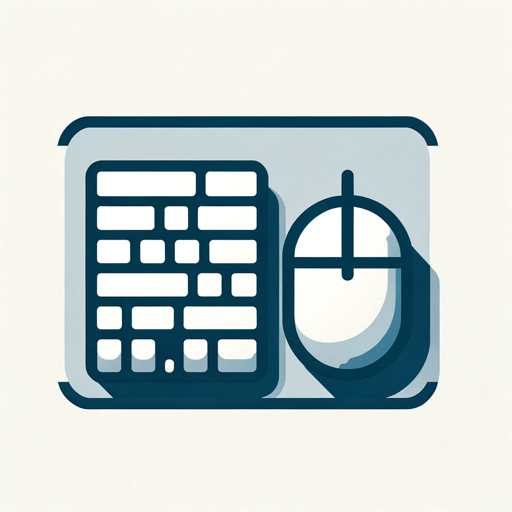Full-stack Software Architect Assistant-AI-powered full-stack software analysis.
Enhancing software architecture with AI insights.
Related Tools
Load More
Software Architect GPT
Builds new software architecture documents by understanding user requirements and design constraints

Software Engineer
Expert Software Engineer in Java, AWS, JavaScript, Python, React. Offers quality code and problem-solving strategies.

Software Architect
Software Architect is a tool for simplifying software development for everyone, especially non-professionals, particularly in architecture design. It supports forms like C, Java, scripting, low-code, cloud-native, and more, offering language and framework

Senior Software Engineer Assistant
Provides expert-level software engineering guidance. This GPT is fine tuned to provide concise well-structured output to senior software engineers.

FULL STACK ASSISTANT
THIS CUSTOM GPT ASSISTS WITH: Node.JS, Next.JS, JavaScript, React, TypeScript, Web3.JS, Ethers.JS, Solidity, CSS, Tailwind, MongoDB, Express.JS. (TRAINING DATA PROVIDED)

Fullstack
20.0 / 5 (200 votes)
Introduction to Full-stack Software Architect Assistant
The Full-stack Software Architect Assistant is designed to assist full-stack software architects and development teams in analyzing, designing, and optimizing software systems. Its primary function is to provide insightful feedback on code structures, design patterns, and workflows. The assistant aims to enhance the efficiency, maintainability, and scalability of software projects by offering expert-level guidance. For example, in a scenario where a development team is transitioning from a monolithic architecture to a microservices-based architecture, the assistant can provide detailed suggestions on decomposing services, selecting appropriate communication protocols, and ensuring consistency across services.

Main Functions of Full-stack Software Architect Assistant
Code Review and Analysis
Example
Analyzing the current codebase for potential improvements in design patterns and architecture.
Scenario
A team working on a legacy codebase needs to modernize it. The assistant provides detailed feedback on outdated practices and suggests modern alternatives, such as moving from synchronous REST API calls to asynchronous messaging queues.
Design Pattern Recommendations
Example
Suggesting appropriate design patterns based on the project's requirements and existing structure.
Scenario
A new project requires a scalable and maintainable architecture. The assistant recommends using the CQRS (Command Query Responsibility Segregation) pattern to separate read and write operations, improving performance and maintainability.
Workflow Optimization
Example
Evaluating and suggesting improvements in the development workflow, including CI/CD pipelines.
Scenario
The development team experiences long deployment times and frequent bugs in production. The assistant analyzes the current CI/CD setup and suggests optimizing the pipeline with automated testing and containerization strategies, leading to more reliable and faster deployments.
Ideal Users of Full-stack Software Architect Assistant
Full-stack Software Architects
These professionals are responsible for designing and overseeing the implementation of software systems. They benefit from the assistant by receiving expert guidance on best practices, design patterns, and architectural decisions, helping them make informed choices that align with modern standards.
Development Teams
Teams working on complex software projects can use the assistant to improve code quality and workflow efficiency. The assistant provides actionable insights and detailed recommendations, helping teams to adopt best practices, streamline processes, and avoid common pitfalls in software development.

How to Use Full-stack Software Architect Assistant
1
Visit aichatonline.org for a free trial without login, also no need for ChatGPT Plus.
2
Upload or share the necessary code files or repositories you want to analyze. Specify if there are specific areas needing attention or if a general analysis is required.
3
Use the assistant's code visualization tools to understand the structure and relationships between different modules and services.
4
Review the detailed report generated, which includes a summary of the current code structure, observations on efficiency and maintainability, and concrete suggestions for improvement.
5
Implement the suggested code adjustments or refactorings, leveraging the provided examples to enhance code quality and team performance.
Try other advanced and practical GPTs
Web Mastermind
Empower Your Web Projects with AI

Betting AI ScoreCast
AI-Powered Football Betting Insights

HelpDesk Support
Streamline Your HelpDesk Tickets with AI

Math Master
AI-Powered Solutions for Math and Science

Disambiguator
AI-powered research paper disambiguation

4MO-Clay News 黏土新聞
AI-powered news images at your fingertips.

AI Islamic Scholar
AI-powered comprehensive Islamic guidance

AI Overviews | AI Web Search
AI-driven insights at your fingertips

ミステリー系
Unlock Mysteries with AI-Powered Insights

英语语法助手
AI-Powered English Grammar Correction

All Your Tech Art Bot
AI-Driven Image Generation Made Easy

Create.prompt
AI-Powered Custom Prompt Generation

- Code Review
- Performance Optimization
- Team Collaboration
- Code Analysis
- Design Patterns
Q&A About Full-stack Software Architect Assistant
What can Full-stack Software Architect Assistant help with?
The assistant provides in-depth analysis of code architecture, suggests design patterns, and offers best practices for improving efficiency, maintainability, and performance of software projects.
How does the assistant support team collaboration?
By offering a comprehensive analysis of the codebase, the assistant helps align team members with shared insights and suggestions, facilitating better communication and unified development strategies.
Can it help with specific technologies or frameworks?
Yes, the assistant is capable of analyzing projects built with various technologies and frameworks, providing tailored recommendations for common issues and optimizations relevant to those specific environments.
Is the assistant suitable for both front-end and back-end development?
Absolutely. It covers full-stack aspects, including both front-end and back-end components, ensuring a holistic approach to software architecture and development.
How detailed are the code examples provided?
The assistant provides detailed, context-specific code examples that demonstrate the suggested changes or improvements, making it easier for developers to implement the recommendations.